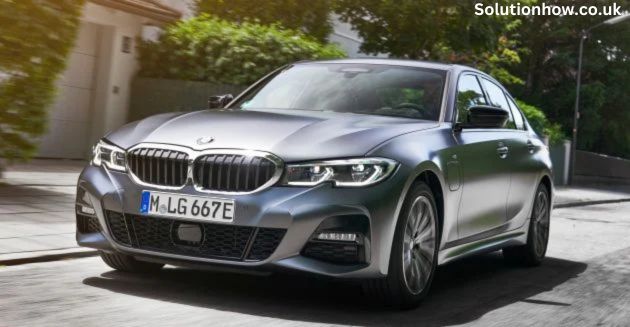The BMW G20 330e 18 Anbefalet Lufttryk, a hybrid model from the iconic 3 Series lineup, combines the elegance, performance, and luxury of the BMW brand with a green, energy-efficient hybrid powertrain. While this advanced vehicle promises exceptional driving dynamics, it’s essential to maintain proper tire pressure for optimal performance, safety, and fuel efficiency. In this article, we’ll discuss the recommended tire pressure for the BMW G20 330e, why it matters, and how to properly maintain it to enhance your driving experience.
Understanding the BMW G20 330e 18 Anbefalet Lufttryk
A Perfect Blend of Power and Efficiency
The BMW G20 330e 18 Anbefalet Lufttryk is part of BMW’s 3 Series family and was introduced in 2018. Like many electric hybrids, the 330e is the amalgamation of a 2.0 litre turbocharged engine and electric motor which gives it a total of around 288 horsepower. This hybrid vehicle offers both remarkable performance and improved fuel efficiency, thanks to the added electric power.
What makes the G20 330e stand out is its ability to offer the performance BMW is known for, while also giving drivers the option of reducing their carbon footprint with electric-only driving for short distances. This hybrid model is an ideal choice for those who seek a high-performance vehicle while being more eco-conscious.
However, to get the most out of this hybrid vehicle, proper tire maintenance, including monitoring and maintaining correct tire pressure, is crucial.
Why Tire Pressure Matters for Your BMW G20 330e 18 Anbefalet Lufttryk
Safety and Vehicle Handling
As such, maintaining correct tire pressure is essential for safe handling and stability. Under-inflated tires can cause sluggish handling, poor braking, and an increased risk of tire blowouts, while over-inflated tires can result in less contact with the road, leading to reduced grip.
By keeping your tire pressure at the optimal level, you ensure the vehicle remains stable, responsive, and safe in various driving conditions. Proper tire pressure also enhances the car’s handling, making it feel more precise and agile during cornering or sudden maneuvers.
Fuel Efficiency and Environmental Impact
When tires are under-inflated, they create more rolling resistance, requiring the engine to work harder to move the vehicle. This additional effort reduces fuel efficiency, meaning you’ll have to make more frequent stops at the pump.
For a hybrid vehicle like the BMW G20 330e 18 Anbefalet Lufttryk, optimal tire pressure is essential for maximizing the efficiency of the electric motor and the gasoline engine. Under-inflated tires will make the hybrid system less efficient, ultimately reducing fuel economy and increasing emissions.
Maintaining the correct tire pressure can also extend the longevity of your tires and prevent premature wear, ensuring that your G20 330e performs optimally for longer periods.
Tire Longevity and Maintenance
Tires that are inflated correctly tend to wear more evenly, extending their lifespan. Improper tire pressure can lead to uneven wear patterns, such as balding in the center of the tread (when over-inflated) or on the edges (when under-inflated). This uneven wear not only reduces the lifespan of the tires but can also compromise their performance, especially when it comes to traction in adverse conditions.
By maintaining the recommended tire pressure, you’ll ensure that your tires wear evenly and last longer, saving you money on premature tire replacements.
Recommended Tire Pressure for BMW G20 330e
Standard Tire Pressure Values
The recommended tire pressure for your BMW G20 330e 18 Anbefalet Lufttryk will vary slightly depending on the specific tire size, load, and driving conditions. However, for standard tire configurations, the typical recommended tire pressures are as follows:
- Front tires: 2.4 bar (approximately 35 psi)
- Rear tires: 2.6 bar (approximately 38 psi)
These values apply to normal driving conditions, such as daily commuting, light city driving, and highway travel. However, if you plan to carry a heavy load or engage in high-speed driving, you may need to adjust the tire pressure accordingly.
Factors That Affect Tire Pressure
There are several factors that can influence tire pressure, and understanding these factors is key to maintaining optimal pressure:
- Temperature Fluctuations: Tire pressure tends to drop in colder temperatures and increase when it’s warmer. A decrease of about 1 psi for every 10°F drop in temperature is normal. This is why it’s essential to check your tire pressure regularly, especially when transitioning between seasons.
- Load and Driving Conditions: When the vehicle is carrying a heavy load or you plan on driving at high speeds, it’s often recommended to increase tire pressure slightly to handle the extra stress. Always refer to the owner’s manual or the label on the doorframe for more details.
- Tire Age and Wear: Over time, tires naturally lose some air pressure. It’s vital to regularly check tire pressure, especially as tires get older. Aging tires can also lose pressure faster than newer ones.
- Altitude: If you live in or travel to high-altitude areas, the atmospheric pressure will be lower. As a result, your tire pressure might naturally drop at higher elevations.
Where to Find the Recommended Tire Pressure Information
To find the exact recommended tire pressure for your BMW G20 330e, you can refer to several sources:
- Tire Pressure Label: BMW typically places a tire pressure label inside the driver’s side door frame. This label will indicate the recommended tire pressures for both the front and rear tires, based on the factory-installed tire sizes.
- Owner’s Manual: The owner’s manual provides detailed information regarding tire pressure specifications for various driving conditions and different tire sizes.
- TPMS System: Many modern vehicles, including the BMW G20 330e, are equipped with a Tire Pressure Monitoring System (TPMS). This system alerts the driver if tire pressure is too low and may be a helpful tool for keeping track of tire inflation.
How to Check and Adjust Tire Pressure

Step-by-Step Guide for Checking Tire Pressure
Maintaining the correct tire pressure for your BMW G20 330e 18 Anbefalet Lufttryk is simple. Here’s a quick guide to help you check and adjust your tire pressure:
- Get a Reliable Tire Pressure Gauge: A digital or dial-type tire pressure gauge is a great tool for accurate readings. While many gas stations have air pumps with built-in gauges, a personal tire pressure gauge is a worthwhile investment for consistency.
- Check Tire Pressure When Tires Are Cold: It’s best to check tire pressure when the tires are cold, as tire pressure naturally increases with driving heat. If you’ve been driving for a while, give the vehicle a break before measuring.
- Remove the Valve Stem Cap: Each tire has a valve stem, where air is added.
- Insert the Gauge: Place the tire pressure gauge firmly onto the valve stem. It will quickly provide a reading of the tire pressure.
- Compare the Reading: Compare the measured tire pressure with the recommended pressure for your BMW G20 330e.
- Adjust Tire Pressure: If the tire pressure is too low, use an air compressor (available at most gas stations or auto repair shops) to inflate the tire. If the tire is over-inflated, press the valve to release some air until the pressure matches the recommended value.
- Replace the Valve Cap: Once the pressure is correct, replace the valve stem cap securely.
How Often Should You Check Your Tire Pressure?
The experts recommend that it’s advisable to check the pressure of the tires every month and especially before going on long journeys. Temperature changes, driving habits, and tire wear can all affect tire pressure, so regular checks will help you maintain optimal performance and safety.
Also Read: LockFov Mod 1.8.9
Signs of Incorrect Tire Pressure
While regular maintenance is the best way to ensure proper tire pressure, it’s also important to watch for signs that your tires may be under- or over-inflated. Some common indicators include:
- Poor Handling: If your BMW G20 330e 18 Anbefalet Lufttryk starts feeling unstable, especially in turns, or if steering becomes less responsive, it may be a sign of incorrect tire pressure.
- Uneven Tire Wear: Tires with incorrect pressure tend to wear unevenly. Tires that have been inflated a lot wear out in the middle while the ones that have been underinflated wear on the side. If you notice uneven wear patterns, check the tire pressure.
- Frequent Flat Tires: Under-inflated tires are more prone to damage, which can lead to blowouts. If you find yourself frequently dealing with flat tires, it could be due to low tire pressure.
- Dashboard Warning Light: Modern BMW vehicles, including the G20 330e, are equipped with a Tire Pressure Monitoring System (TPMS). If the TPMS warning light illuminates, it’s a clear indication that one or more tires are not at the correct pressure.
Conclusion
Tire pressure plays a critical role in the performance, safety, and efficiency of your BMW G20 330e. Regularly checking and adjusting tire pressure ensures a smooth and comfortable driving experience while prolonging the life of your tires. For the BMW G20 330e 18 Anbefalet Lufttryk, the recommended tire pressure values are 2.4 bar (35 psi) for the front tires and 2.6 bar (38 psi) for the rear tires under normal driving conditions.
By maintaining these recommended pressures, you help ensure the hybrid system operates efficiently, enhance vehicle stability, and reduce the risk of tire damage or blowouts. With proper tire maintenance, your BMW G20 330e will continue to provide the exceptional performance and driving pleasure that BMW is known for.



